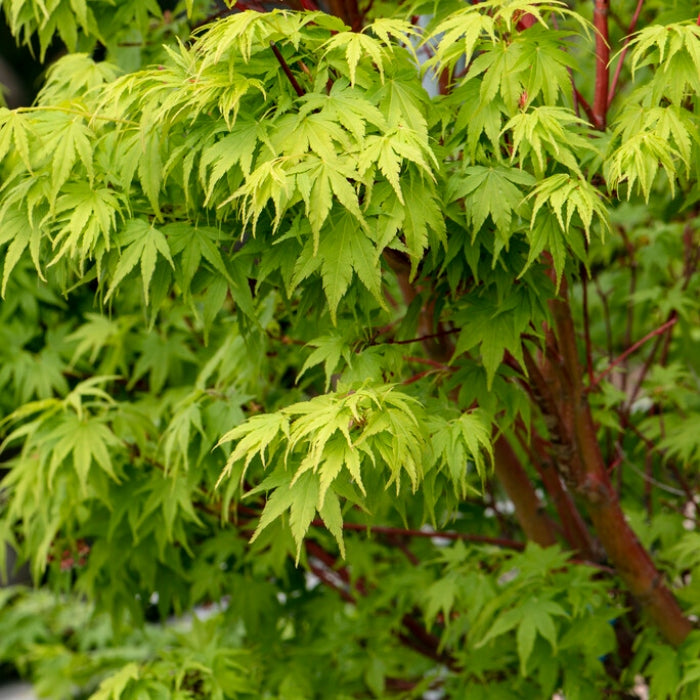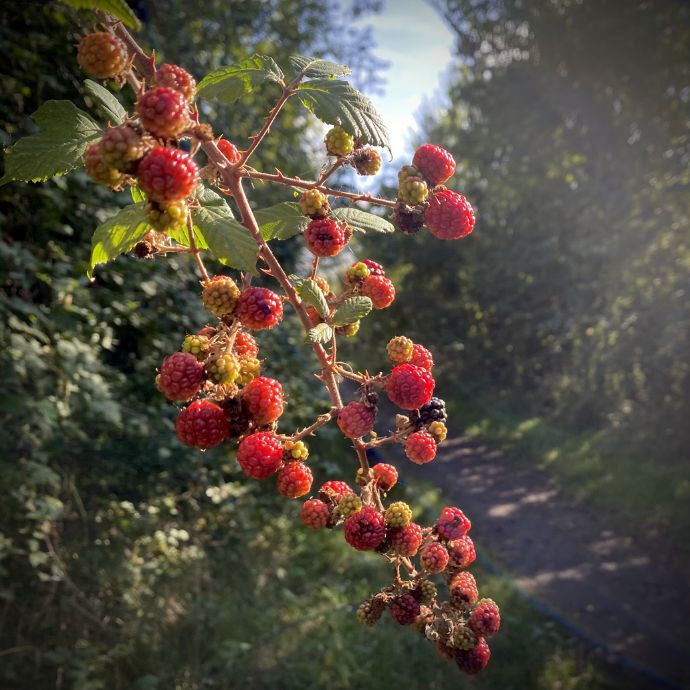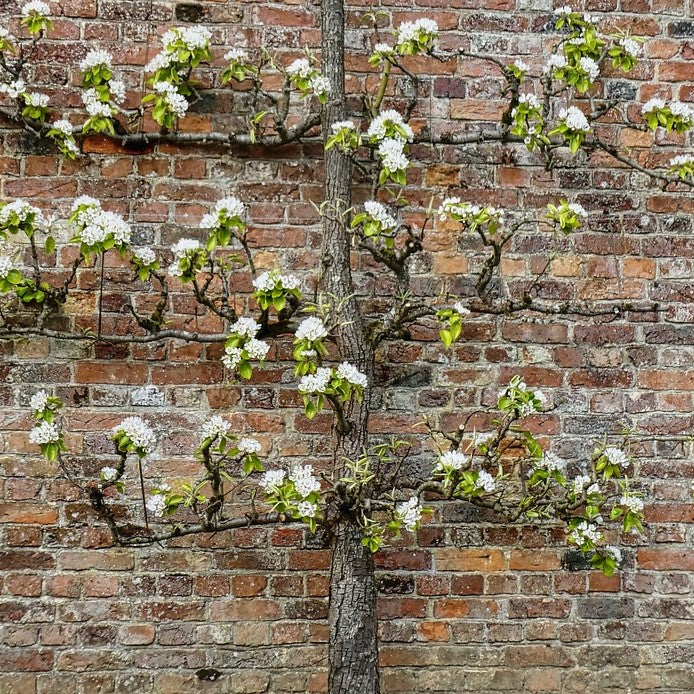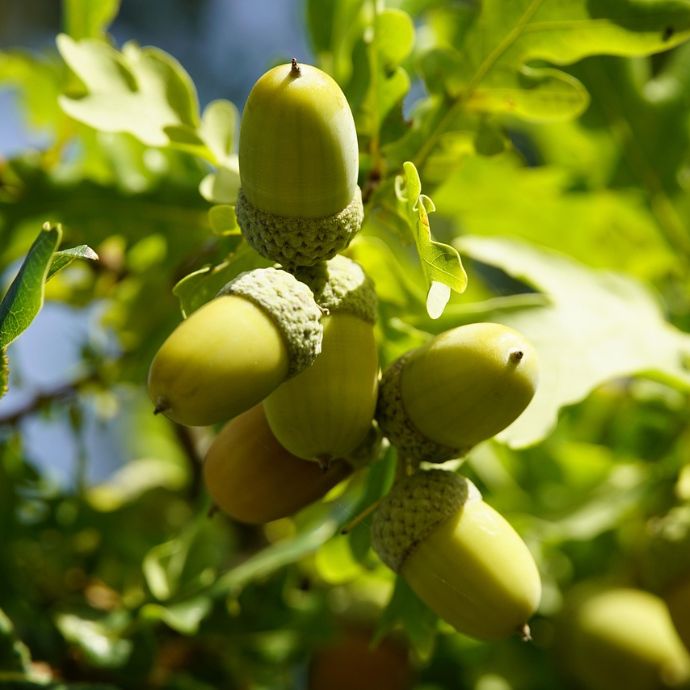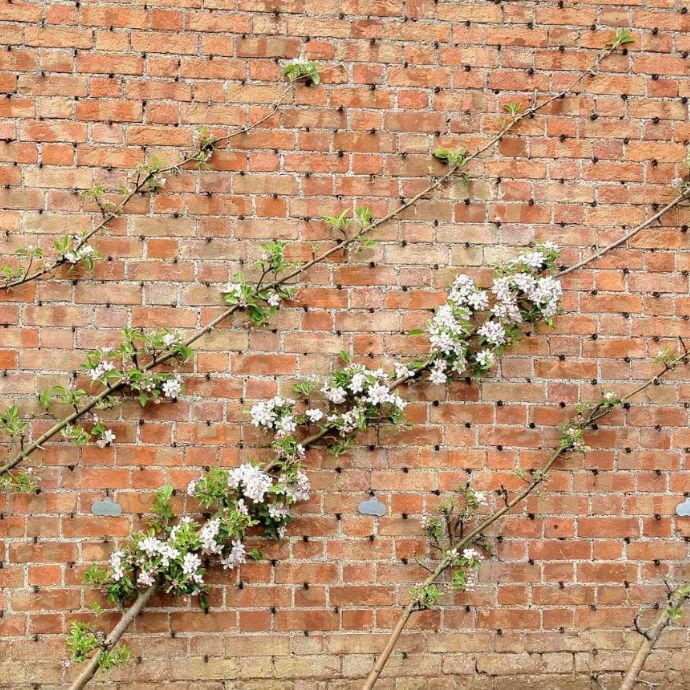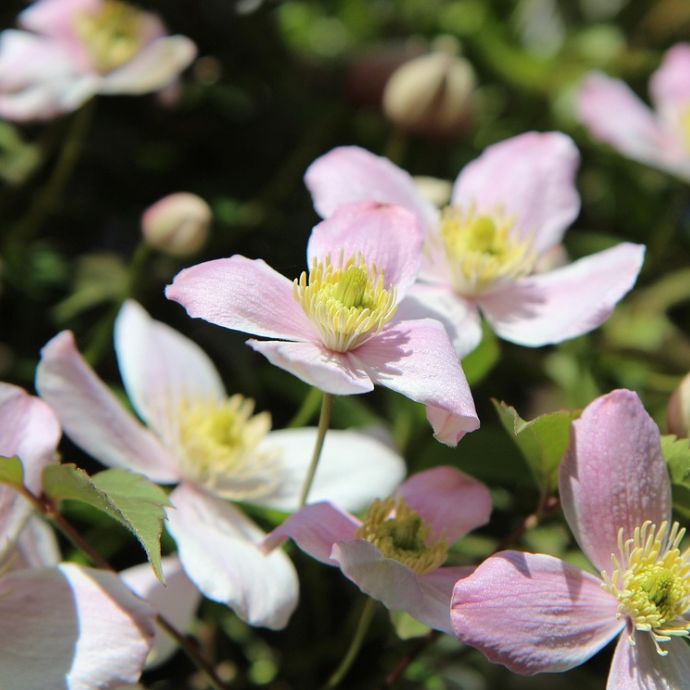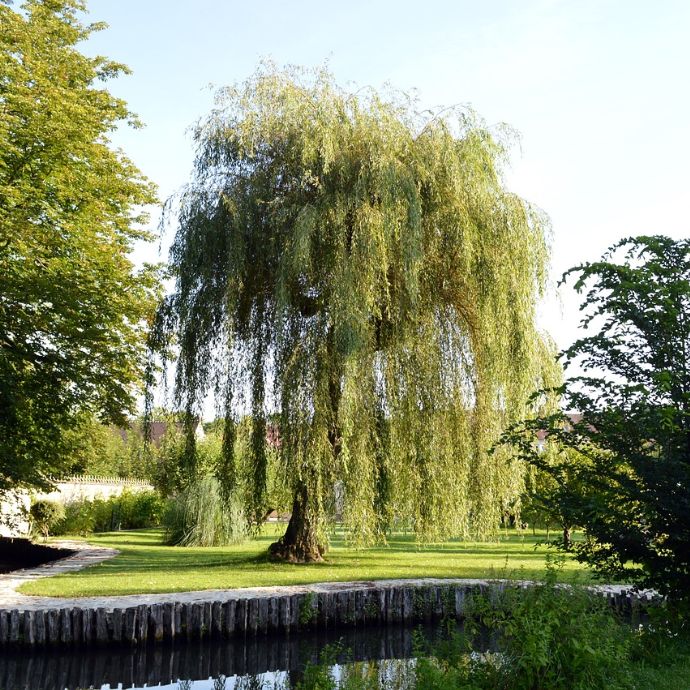Growing Broccoli: The Complete Guide
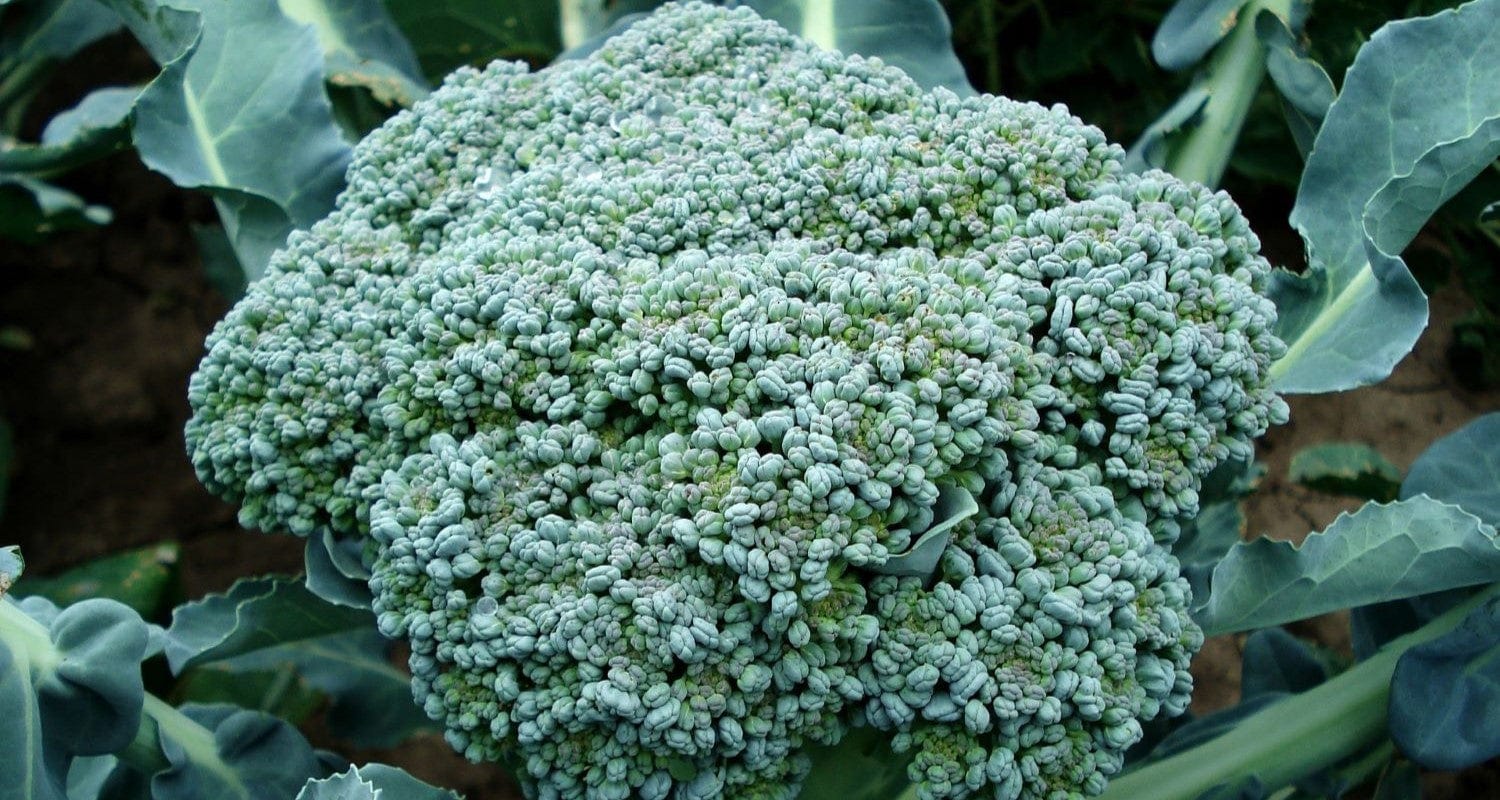
If you love broccoli (and who doesn’t? It’s the UK’s eighth most popular veg), growing your own is a great way of ensuring you have a fresh and readily available supply. We asked our growers for their top tips on how to grow broccoli for the best crops, as well as how to avoid problems. All you need to know is here…
Jump to:
- Which type of broccoli?
- Growing from seed
- When to plant
- Where to plant
- How to plant
- Growing broccoli in pots
- Companion plants
- Plant care
- Harvesting
- Crop rotation
- Problem solving
Which broccoli plants to grow?
There’s a lot of variation between plants we call broccoli, with different shapes, colours and flavours on offer. So which ones should you grow?
Is it broccoli or calabrese?
Most of the broccoli we eat in the UK (the short, dense, blue-green chunky type) is technically calabrese. Then there’s the long, green, slender type which is often called tenderstem, the purple sprouting variety and even white sprouting. All the types of broccoli are equally nutritious and easy to cook, although the sprouting types are more highly prized in terms of flavour and appearance. There are also new brassica hybrids consisting of broccoli crossed with a related vegetable, such as brokali/broccolini (crossed with gai lan or Chinese kale).
For the purposes of this guide, I’m going to call them all broccoli (sorry, brassica pedants) as their growing requirements are roughly the same.
As broccoli can be planted in spring or autumn, it's good to grow a variety of types throughout the year and see which does best on your plot - time it right and you’ll never run out.
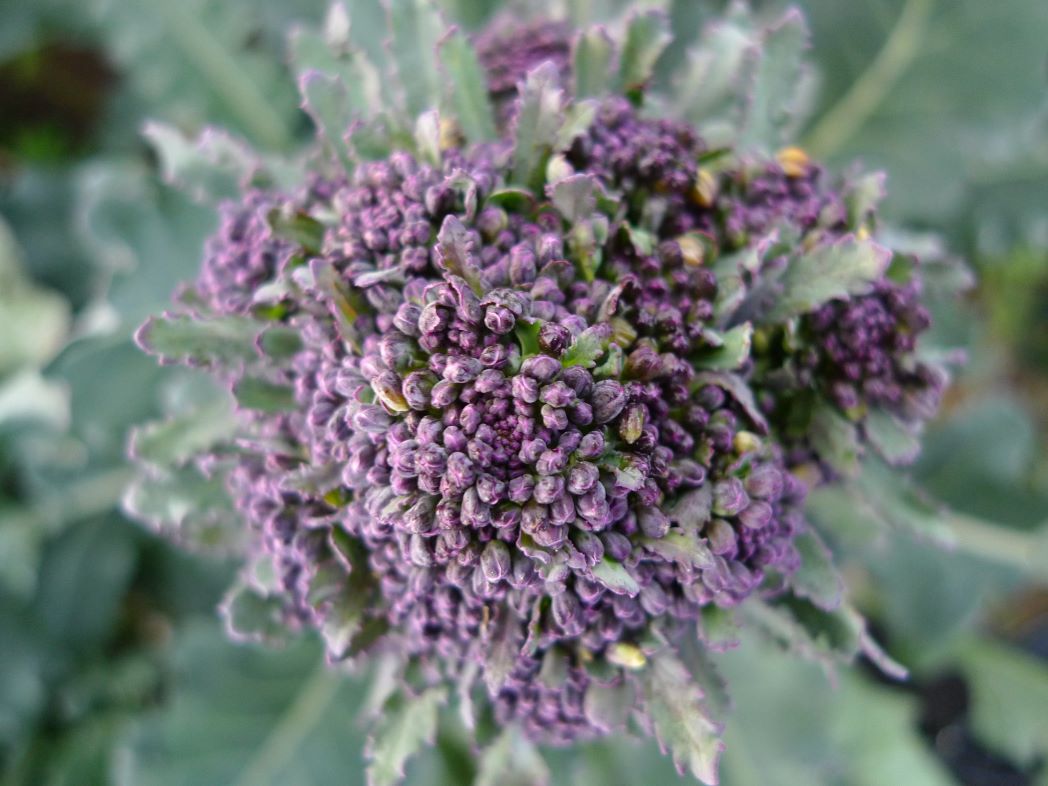
Image source: Flickr.
How to grow broccoli from seed
You can start sowing your broccoli seeds indoors from February or March onwards. Use small pots full of seedling compost or coir pellets, and position them on a sunny windowsill, in a propagator or in a greenhouse. To stagger out your harvest times, you can sow seeds every six weeks. When your plants have four to five leaves, you can transplant them outside 45-60cm apart or into larger pots if the risk of frost has not yet passed. (This is typically mid-May, but check the dates for your area.)
Alternatively, you can sow the seeds directly outdoors around the same time, 3-5 weeks before the last frost date, and thin them out to 45-60cm intervals when they reach a height of 5-7cm.
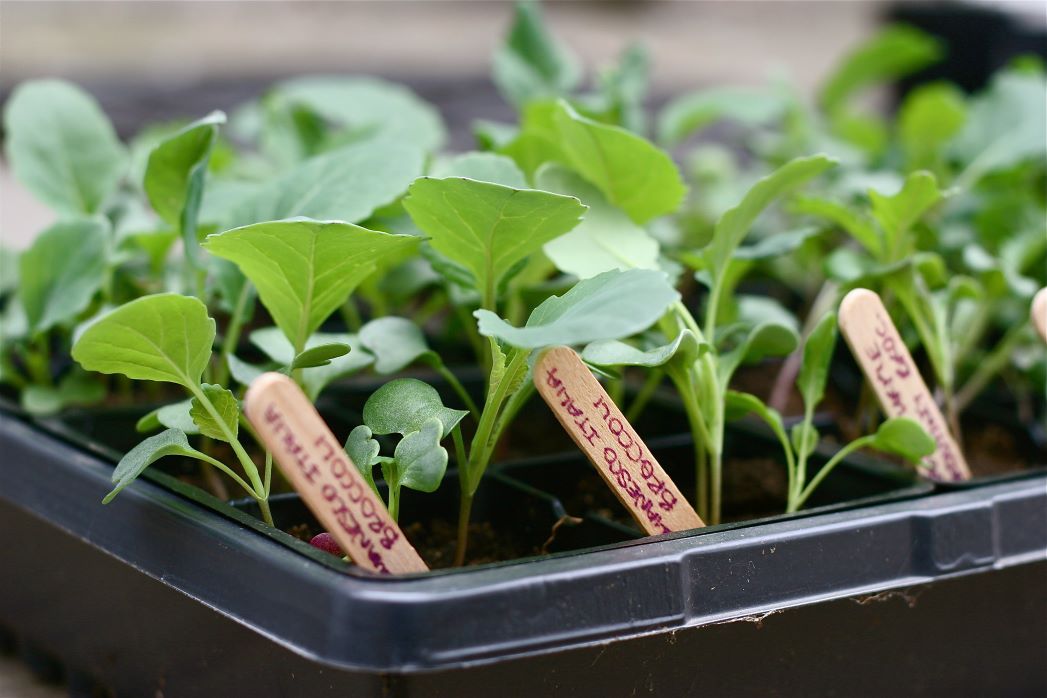
Image source: Flickr.
When to plant broccoli
Plant out your broccoli plants after the last frosts in late spring or early summer for harvests in August or September, or alternatively, plant them in September or October for harvesting by late May. Established broccoli plants are cold hardy and will stand in the ground throughout winter, but it’s a good idea to cover them with fleece once the heads develop, so that the frost doesn’t damage them.
Where to plant broccoli
Broccoli plants prefer moist, well draining fertile soil which is slightly on the alkaline side. The best soil mix is about three parts compost to one part topsoil, and if you’re really well prepared, add some well rotted manure to the soil the autumn before you start growing. In terms of sun, most broccoli varieties do best with a bit of light shade, but some will need full sun (6-8 hours per day), so be sure to check which applies to the variety you’re growing.
Planting broccoli
The most important thing to do when planting broccoli is to leave enough space between the plants, for the heads and side shoots to develop fully. 30cm is a good distance to leave between plants, and if you’re growing them in rows, leave 30-45cm between the rows too.
To plant your broccoli, dig a hole slightly larger than the plant’s roots, place your plant in the centre of the hole and fill it in with soil. Firm it in with your hand and give it some water to help the soil settle around the roots, then give your plants a head start by adding some slow release plant food or manure.
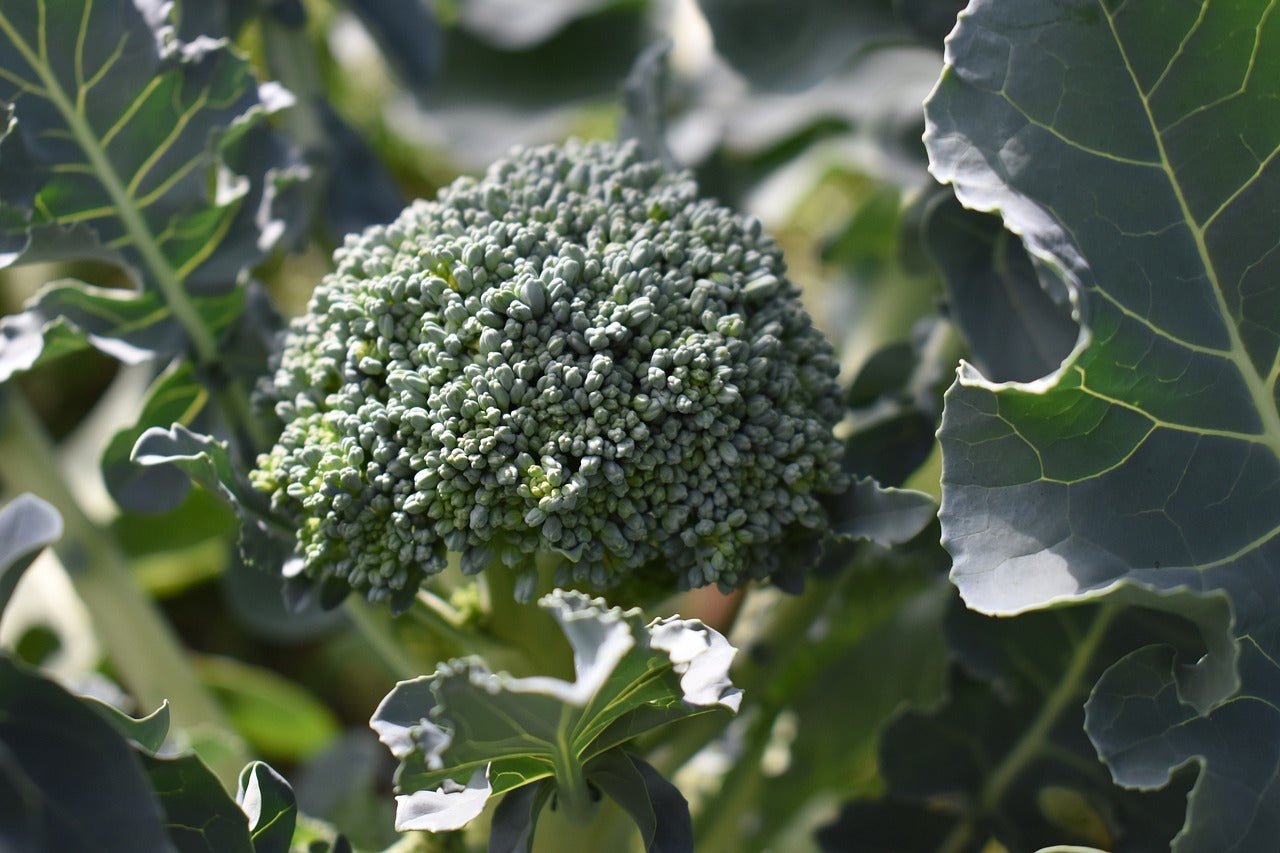
Do broccoli plants need support?
If your broccoli plants are getting tall and there’s a risk of them toppling over (especially under the weight of the growing heads), it’s a good idea to support them with a plant stake, to prevent the stems breaking or the heads touching the soil and potentially picking up a soil-borne disease. Carefully push your plant stake into the ground next to your plant, then tie it to the plant stem using a soft plant tie or twine. Alternatively, if you have a good number of plants growing together, you can build a cage around them with garden canes and twine, to keep them all upright.
Growing broccoli in containers
Growing broccoli in pots means you can grow in the smallest of spaces, and move your plants into the sunniest position easily. Each plant should have a pot around 7L in size, or up to three plants in a 15L pot spaced equally apart. Make sure that the pots you use have drainage holes at the bottom to allow water to drain away and not rot the roots. Plant your broccoli in the pot as above and leave about 5cm of space between the top of the pot and the soil level, to allow for watering.
Companion plants for broccoli
The best companion plants for brassicas such as broccoli are those which lure pests - in particular caterpillars - away, such as marigolds and nasturtiums.
Basil, chives, garlic and dill are all strongly scented and although we find them delicious, flies and other insects will keep their distance; planting sage will help to deter the dreaded cabbage root fly.
Growing bee friendly flowering plants near your broccoli will also help in the blossom stage, by attracting the insects you need to pollinate your plants.
Finally, there’s no firm evidence on this, but some growers reckon you can improve the flavour of broccoli by planting it alongside potatoes, celery or onions. Worst case scenario? You’ll be able to make a lovely vegetable gratin…
Find out more about companion planting.
Broccoli plant care: watering and feeding
Broccoli needs to be watered regularly and the ground kept consistently moist. If you’ve planted it in the autumn this won’t be a problem, but once the warmer weather arrives, you’ll find you need to water your plants every day or two. The soil should never be allowed to dry out - a layer of mulch such as manure, bark chips or rotted leaves applied in spring will help to keep moisture in the soil as well as suppressing weeds.
Brassicas need a fair bit of nitrogen in the soil to grow well, so as well as adding mulch at the planting stage, you should feed them with worm castings, chicken manure pellets or coffee grounds, then repeat this every couple of weeks throughout the growing season.
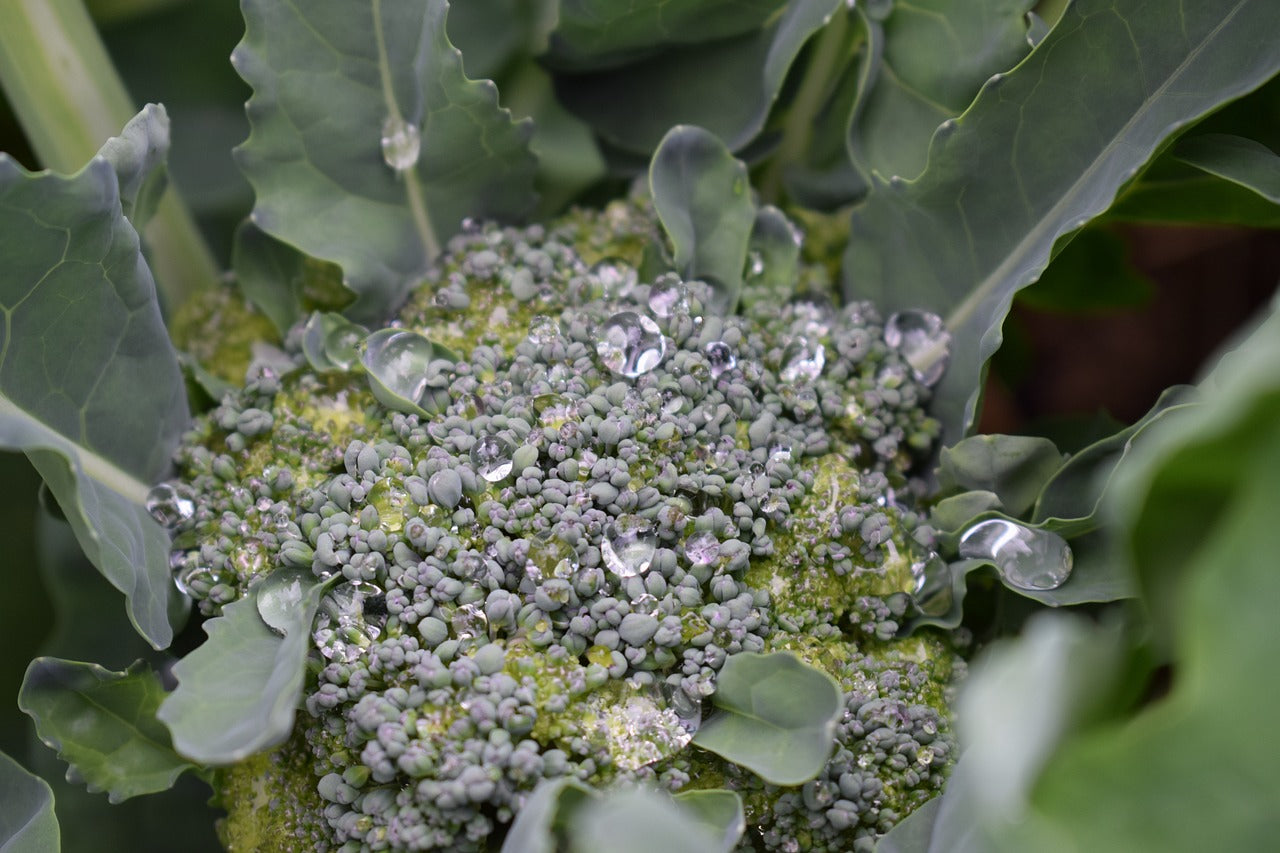
Do you need to prune broccoli?
Although you don’t need to prune your broccoli plants, there are a couple of things you can do to influence the way they grow.
If you want smaller florets rather than one large head, pinch out (remove) the main central head about a month after putting your plant in the garden. This will make the plant grow several large side shoots rather than putting all its energy into the main head.
If you prefer one large head of broccoli, do the opposite - pinch out the side shoots as they grow, to redirect the plant’s energy into the main head.
The most common way to get the most from your plant is to do neither of these things, but once you’ve cut your main broccoli head, leave the plant in the ground - it will continue to produce smaller florets from the side shoots that you can keep harvesting as they grow.
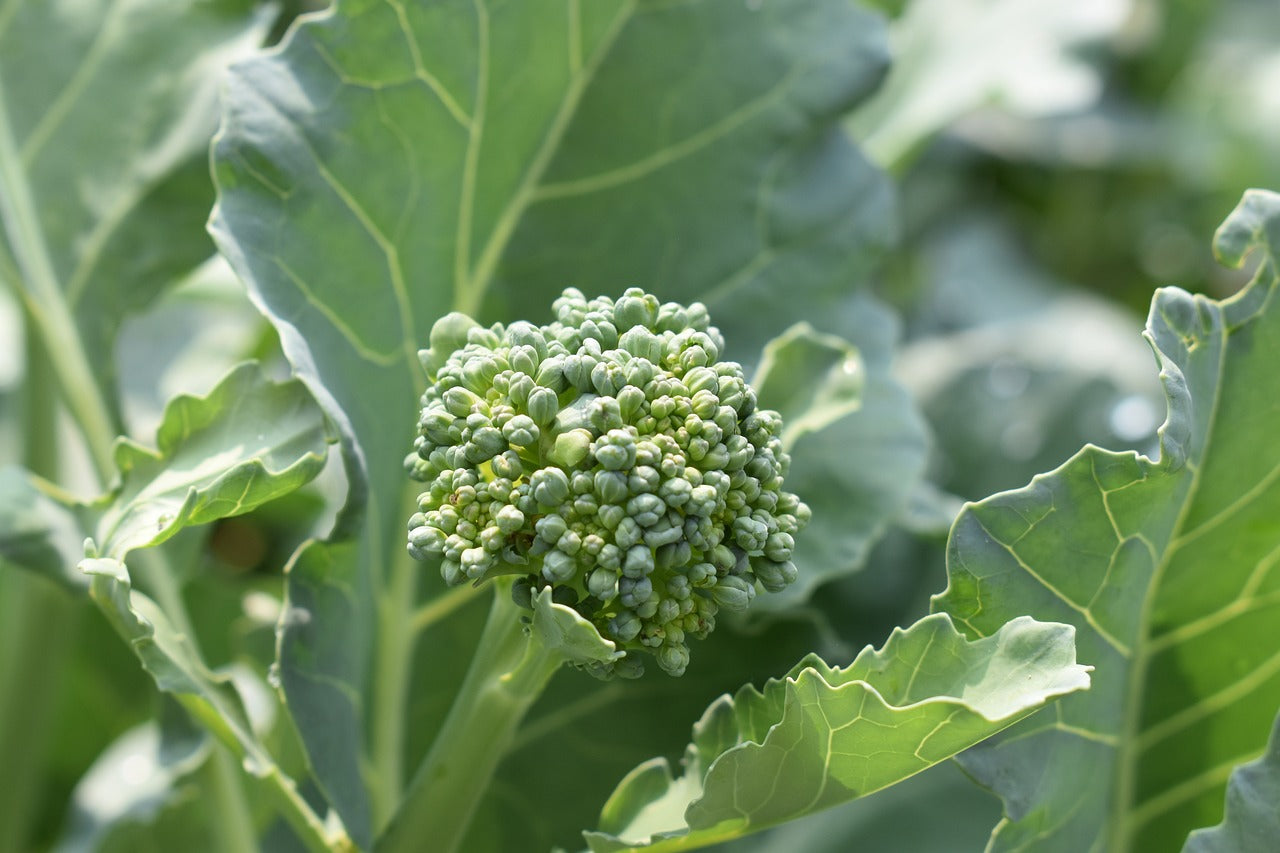
When and how to harvest broccoli
Your broccoli should be ready to harvest after about 8-12 weeks from planting outside. Cut the main head when it’s the size you want, then you should get about 4-6 weeks of cutting florets from the side shoots after that.
To harvest your broccoli spears, cut them off with a clean, sharp knife at the point where the base meets the main stem.
Don’t leave it too late - broccoli florets are actually clusters of flower buds that haven’t come out yet and if you leave them too long, they’ll turn into flowers. Watch your plants closely in very hot weather, as this is when it tends to happen. If you don’t catch them in time however don’t worry - the flowers are still edible and you can use them in salads.
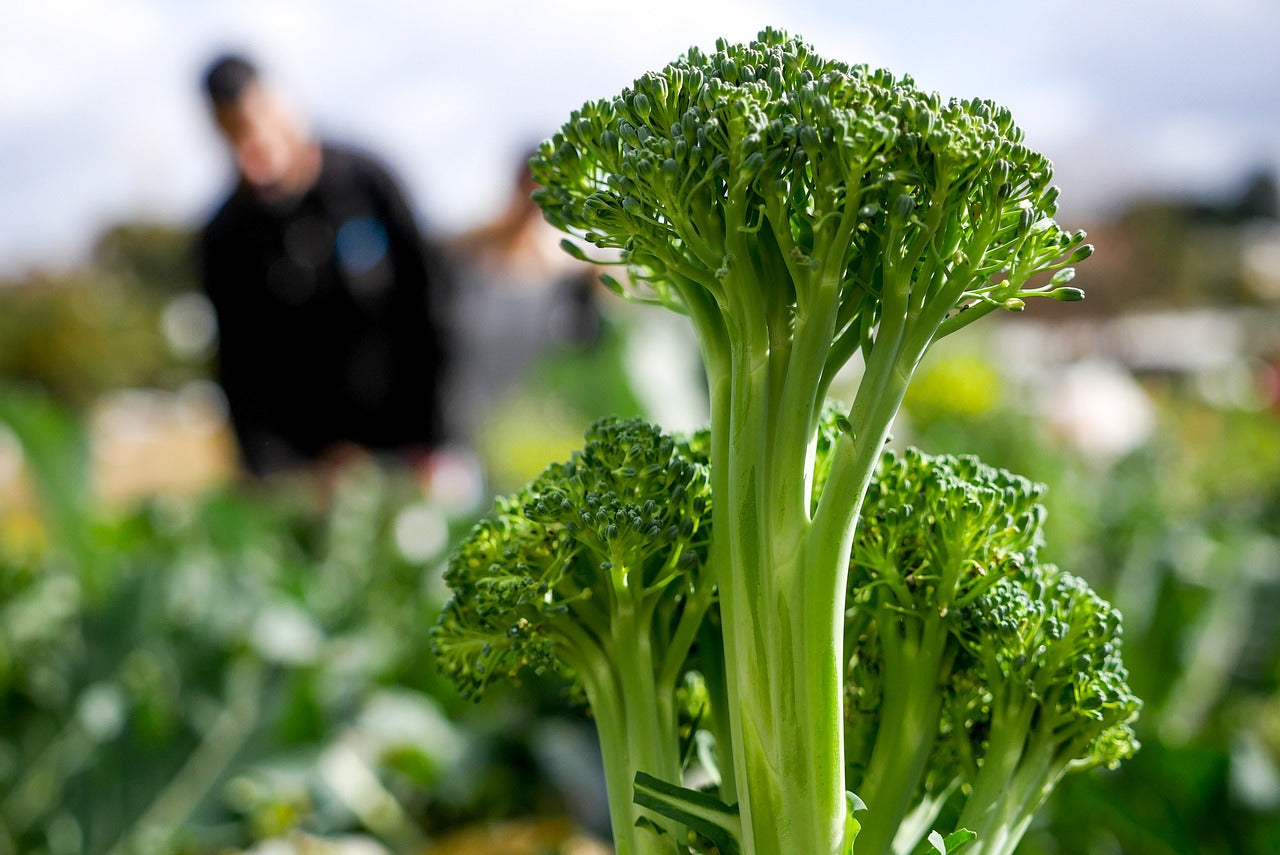
Storing broccoli
Freshly harvested broccoli will keep for a day or two on the kitchen counter before it starts to go limp, so it should always be stored in a fridge. If you have a big harvest and end up with more than you can eat, broccoli florets are great for freezing. Here’s how to keep your broccoli extra fresh.
Keeping broccoli in the fridge
Don’t wash your broccoli before it goes in the fridge - this makes it soggy and risks your lovely florets going mouldy. The best part of the fridge to store your broccoli is in the salad drawer, but make sure it’s not overcrowded, as poor air circulation can make your veg go off quicker. Stored properly, broccoli will last up to two weeks in a fridge.
How to freeze broccoli
First, chop your broccoli into florets (if using calabrese types - store sprouting varieties as whole stems) then rinse them in a colander.
You’ll need to blanch your florets before freezing - this simply involves boiling them for two or three minutes, then plunging them into iced water to stop the cooking process.
Put them back in the colander to drain, then pat it dry and arrange the florets on a baking sheet so they’re not touching.
Resisting the temptation to roast them and eat the lot, put the tray of florets into the freezer for an hour or two, then take it out and put the frozen florets into freezer bags or containers.
Your broccoli will keep in the freezer for up to a year. To keep it nice and crisp, don’t thaw it, just add the frozen broccoli to whatever you’re cooking.
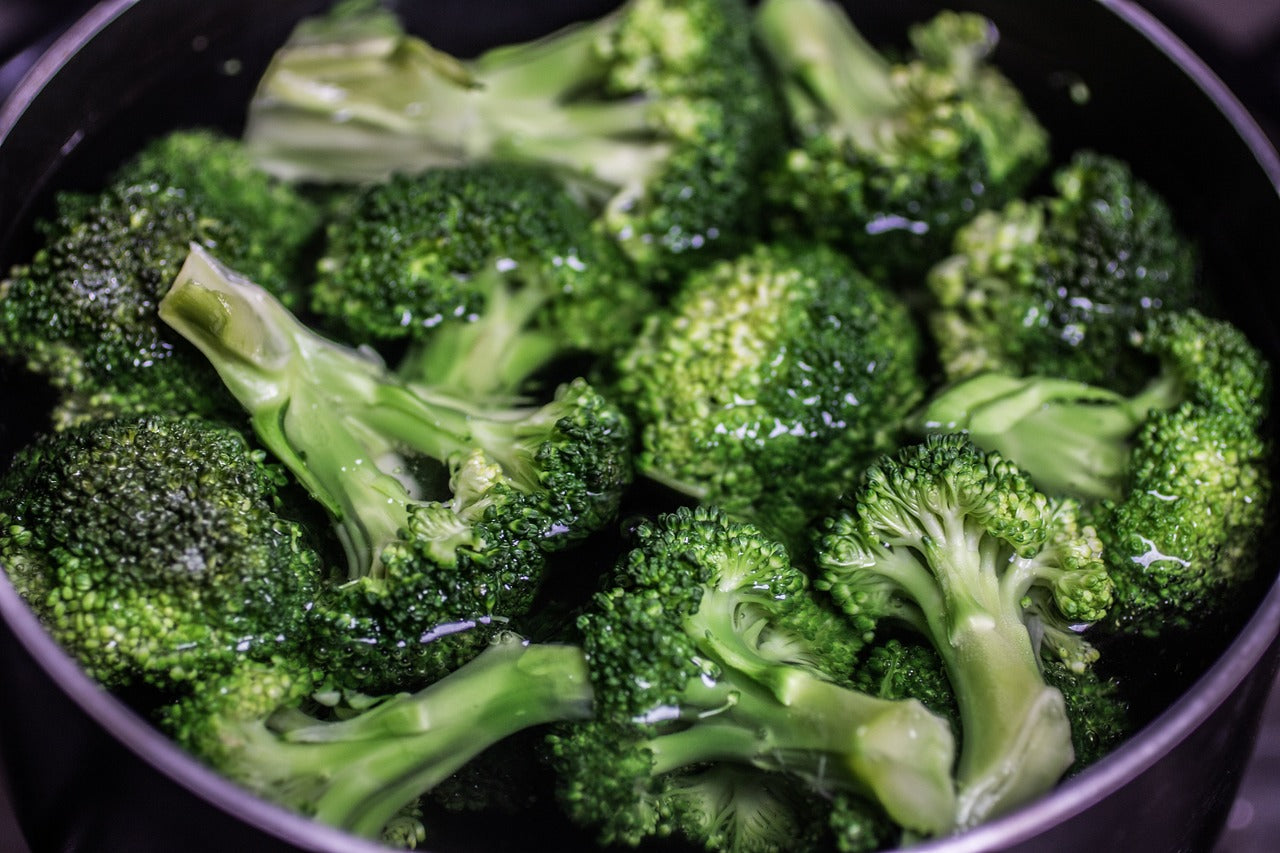
Broccoli crop rotation
If you plan ahead, you can use crop rotation methods to give your broccoli the best start with a soil full of the nutrients it needs. The best bed to use is one that’s had beans or peas growing in it the previous year. Beans leave a lot of nitrogen in the soil, which brassicas need to grow healthy leaves. The year after you’ve grown your broccoli, plant peas and beans again to rebalance the nitrogen that the brassicas used.
Broccoli problems: common pests and diseases
Like all brassicas, the main problems for broccoli plants are caterpillars and cabbage root fly, with slugs and birds presenting a mild threat too. The best defence against them is to cover your plants with a fine net or hoops covered in mesh. This will let in the rain and sunlight while protecting your crop from pest damage - companion planting is also a good idea, and you should always keep the ground free from weeds and space your plants well apart to prevent moulds and mildews.
Cabbage root fly
Cabbage root flies look like small, grey house flies. The tiny fiends lay their eggs near the base of brassica plants and the resulting maggots burrow their way into the root system of the plant, feeding on it and causing the plants to wilt, become yellow and even die.
Netting your plants will help to keep them off, and to add extra protection against cabbage root fly you can also use a brassica collar which prevents the flies from laying their eggs at the base of the plant. These look like a small circle of felt or cardboard which you fit around the stalk of the plant - it’s easy and cheap to make your own.
Caterpillars
The absolute scourge of my brassica patch. Check under the leaves of the young plants regularly for eggs (especially if you see any cabbage white butterflies in your garden) and wipe them off with a damp cloth (or blast with a hosepipe) if you see any. If any caterpillars have hatched, pick them off ASAP (I use plastic tweezers) and relocate them to hell.
Slugs and snails
Slugs don’t tend to attack established brassica plants (and if they do, the damage is minimal) but you will need to look out for them around younger plants.
The best non-lethal way to keep them away is with a barrier - this can be made of copper wire, which will react with the slug’s mucus to deter them, or crushed eggshells/gravel which they find difficult to cross.
In case of severe slug attacks, wool pellets are a humane and less harmful alternative to the blue chemical slug pellets you can buy, and won’t harm beneficial wildlife such as hedgehogs.
Club root
Broccoli can suffer from club root, which affects most brassicas - you may see the leaves wilt and turn purple, and below ground, the roots will have become swollen and bulbous. Club root is caused by an infection so if it strikes, you shouldn’t plant brassicas there again for four years. You can help to prevent club root by ensuring your soil drains well (mixing in some horticultural grit or perlite if it’s too heavy) or making it more alkaline by adding lime or ericaceous compost.
Last updated: 07/02/2024
